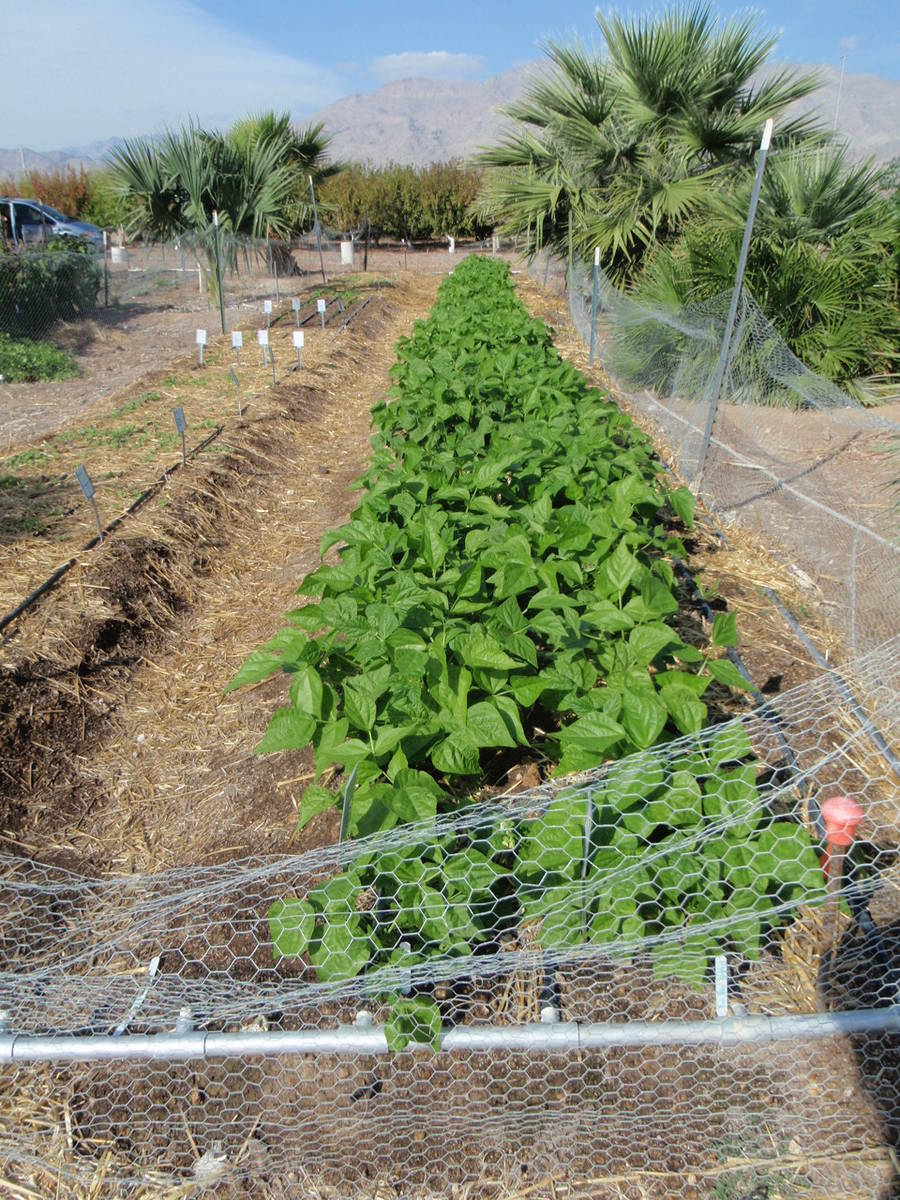Planting may have been done at wrong time of year
Q: This summer I had a terrific garden with lots of tomatoes, but my zucchini died by midsummer, green beans were lush and beautiful but produced nothing, and just a couple of fruit from my cantaloupe but no watermelon. I’m not sure if the roots of my carrots and beets have gotten bigger, but they sure have beautiful tops. I rototilled in a bag of manure, waited two weeks, and rototilled again.
A: Several things may have gone wrong for you. In a longer email, you said they were planted at the right time of year. I’m not so sure. When it’s hot you should have finished harvesting your beans, carrots and beets a long time ago. You could be planting a second crop of these just before cool weather arrives, but you shouldn’t be seeing tops now. These are cool-season crops.
I don’t know where you got your planting calendar, but I am sending you one that I created for a local company. It’s adjusted for 1,000-, 2,000- and 3,000-foot elevations. It also advises what vegetables you can plant from seed and those from transplants only. You still need to adjust it for your local weather microclimates, but it’s correct otherwise. I will be happy to send you a copy by email and to anyone who wants one.
Zucchini and melons are warm-season vegetables. It sounds like they were planted at the right time. You don’t mention the varieties of vegetables you planted. Maybe you chose the wrong variety. Selecting a good variety for the hot desert and planting cool-season vegetables just before cool weather arrives is a must for successful gardens.
I am also sending you a copy of a local vegetable guide that suggests some successful varieties that you can try first. Record what you try and when you plant it. Plant trusted varieties first and experiment with unknown varieties in small numbers.
Sounds like you rototilled steer manure into your garden area. Nothing wrong with that. Sounds like the two weeks that you waited before cultivating a second time worked for you. Steer manure is not a bad choice. It just depends on where it came from, how it was processed and, taking these into consideration, your level of comfort using it. Make sure you wash all of your vegetables before eating them.
Q: About one month ago my landscaper recommended watering six days a week for 20 minutes because he thought one of our Japanese blueberries and yew were not getting enough water. They were planted about six months ago during the winter months when it was cool and now they are not looking healthy.
A: If you follow me here or on my blog, you know I’m not a big fan of planting Japanese blueberries in our desert climate and soils. Maybe one or two as specimens but not a bunch in a straight line and used for privacy. I don’t like yew pine either for similar reasons, but I seldom get questions about yew pine. I get more complaints about Japanese blueberry failing in home landscapes than any other plant except maybe bottle tree.
People buy both Japanese blueberry and yew and put them in the wrong places in a landscape, fail to amend the soil properly at planting and surround them with rock. Someone is doing a good job selling them as privacy hedges near a wall. That’s a mistake in my opinion, and I wish it would stop.
I am assuming you are watering these plants three or four times a week and your landscaper is suggesting watering daily. Watering three or four times a week will be enough water for these plants during the summer if they receive enough water each time.
Daily watering any types of trees and shrubs is a mistake. That’s not an opinion. That’s a fact. Don’t go there if you don’t have to. Your plants may not be any better off after this change if they were planted in the wrong place at the start.
I suspect that both types of plants were planted in the wrong location in the landscape. Both plants like shade in the afternoon when temperatures are above 100 degrees Fahrenheit. They struggle if planted in full sun in our desert climate. They will look bad during the hot summer months when planted near hot walls. Remember this when you are evaluating your plants.
Both plants prefer highly amended soils at the time of planting. They are not true desert plants, so they will require extra TLC. If these plants are surrounded by rock they will begin to struggle in three to five years. If you do plant them, make sure the soil is amended with a good-quality compost at planting and surround them with 4 inches of woodchips on the soil surface rather than rock.
What to do? Rather than increase your irrigations to daily, increase the number of emitters or size of emitters around those plants. Increase the amount of water delivered to them so that it wets the soil to at least 18 inches deep. This can be done without increasing the minutes needed.
The soil should be wet out to the dripline of the plant. Irrigate them deeply three to four times a week, not shallow irrigations daily. The only plants in a landscape that require daily irrigations during the summer are lawns, raised beds and annual flowers.
If you think these plants should be moved to a different landscape location, replant them during the fall and winter months. Remove one-third of the tops after they are moved. You can successfully move plants that were growing up to two or even three years in the ground if done correctly.
Q: I think I don’t have enough bees to pollinate my vegetables. What should I do?
A: To improve vegetable pollination, plant herbs in the garden or in containers such as rosemary, dill, lavender and tarragon to attract bees. Herbs that flower during the winter like rosemary are a good choice for cool-season crops. Other herbs that flower in the summer keep pollinators coming back.
Water also attracts pollinators in the summer, so put out a shallow tray of water with some rocks in it and clean the tray and water once a week.
Remember pollination will be erratic in the garden anytime temperatures climb above 90 degrees. Once temperatures exceed 105, few plants get pollinated during that kind of heat. Successful pollination occurs again when the air temperatures start dropping in the late summer and early fall.
Q: I use shade cloth on my garden over the tops of plants and cover the sides for insect control. When temperatures are cooler in the morning and early evening, I raise the shade cloth on the sides to allow pollinators to enter the garden area.
A: Some vegetables improve when they receive less light and some don’t. Sunlight is used as a source of energy for plants. If you block too much sunlight, then vegetables receive less energy. Less light means less food is produced.
The magic number for vegetables that perform well in shade is somewhere between 30 and 40 percent shade when grown in intense desert sunlight. There is seldom a reason for using shade cloth rated with more shade than this.
Typical problems from intense desert sunlight are thicker and tougher leaves and sunburn. It’s logical then that vegetables we grow for their leaves — lettuce, spinach and most herbs — improve under about 30 percent shade. Their leaves become larger and more tender.
Sunburn happens mostly to fruit such as tomatoes, peppers and melons when the shade from leaves growing above fails to protect them. Making sure vegetables have a small but constant source of nitrogen (annual compost, vermicompost or manure applications) helps to produce leaves and stems needed for sunburn protection.
Root crops like carrots and beets like full sun. But if you consume their tops then shade cloth improves the quality of the tops. The vegetables that don’t typically benefit from reduced sunlight due to shade cloth are those that produce from flowers like tomatoes, peppers, eggplant, squash, cucumbers and melons.
Shade cloth is placed on the top but usually not on the sides unless you are controlling destructive insects. The use of netting to control damaging insects is called “exclusion” and is a good integrated pest management strategy. Leaf damage from insects is ignored unless these leaves are eaten or consumed in some way or if the damage is excessive.
Bob Morris is a horticulture expert and professor emeritus of the University of Nevada, Las Vegas. Visit his blog at xtremehorticulture.blogspot.com. Send questions to Extremehort@aol.com.





























